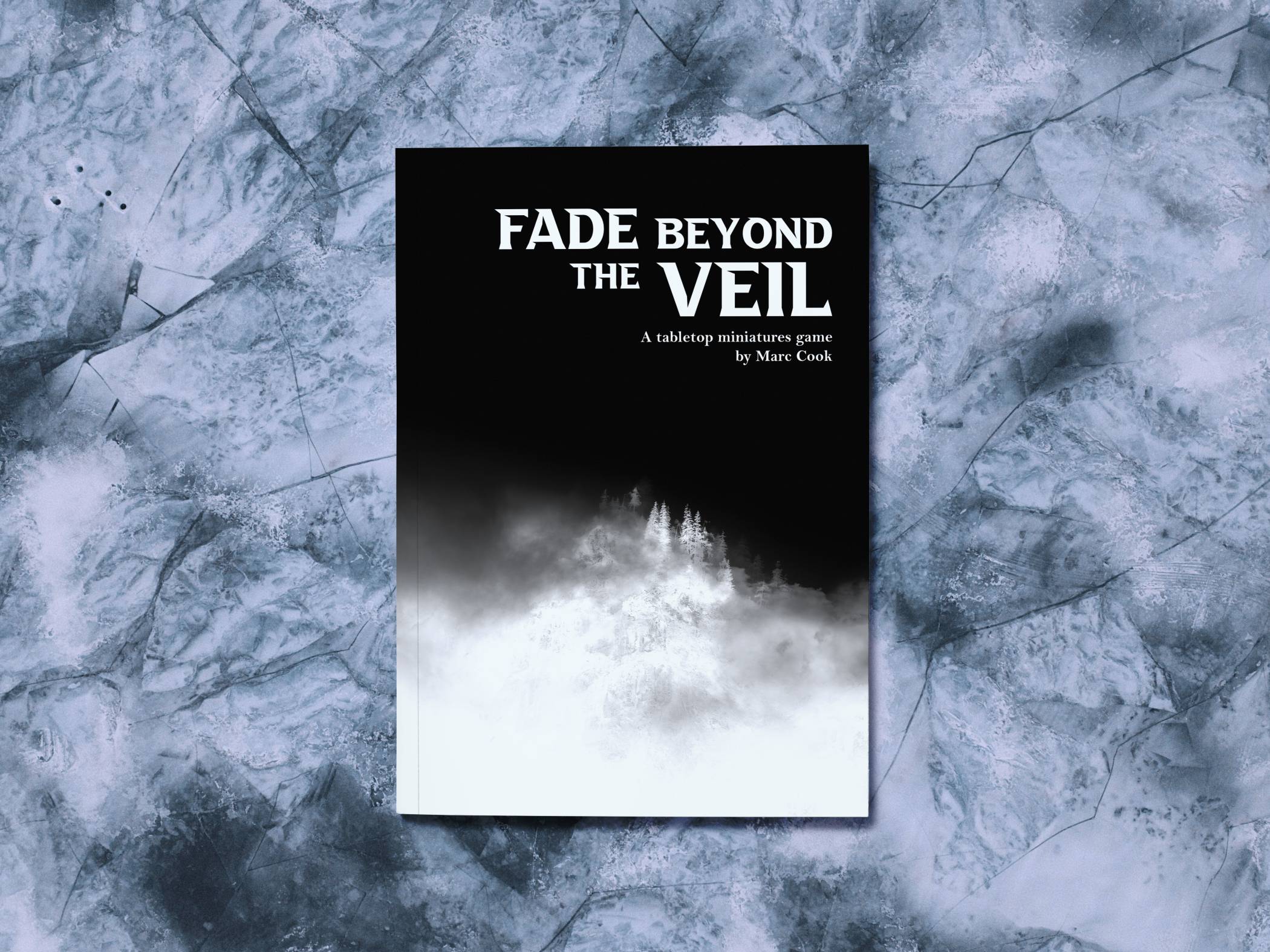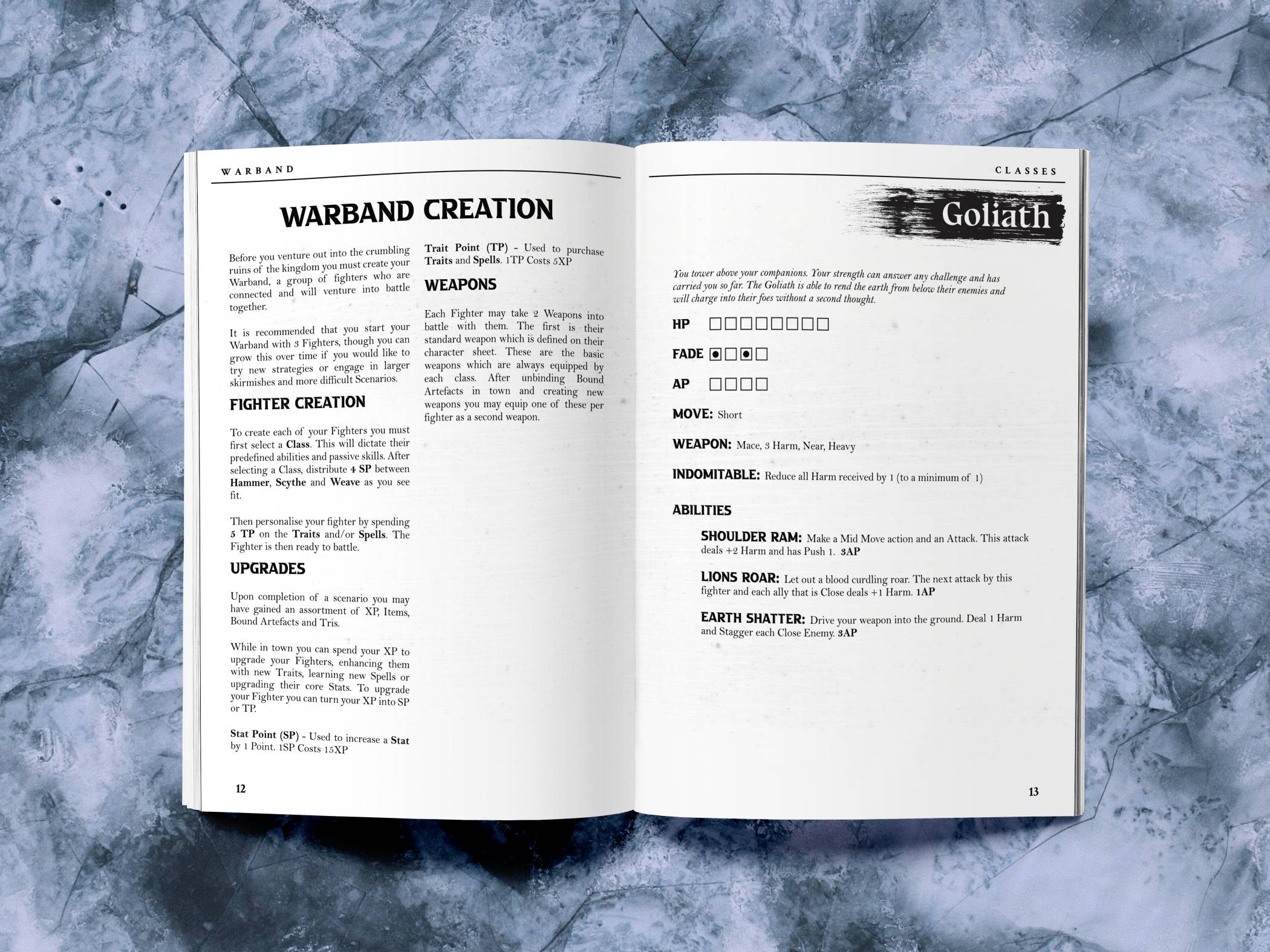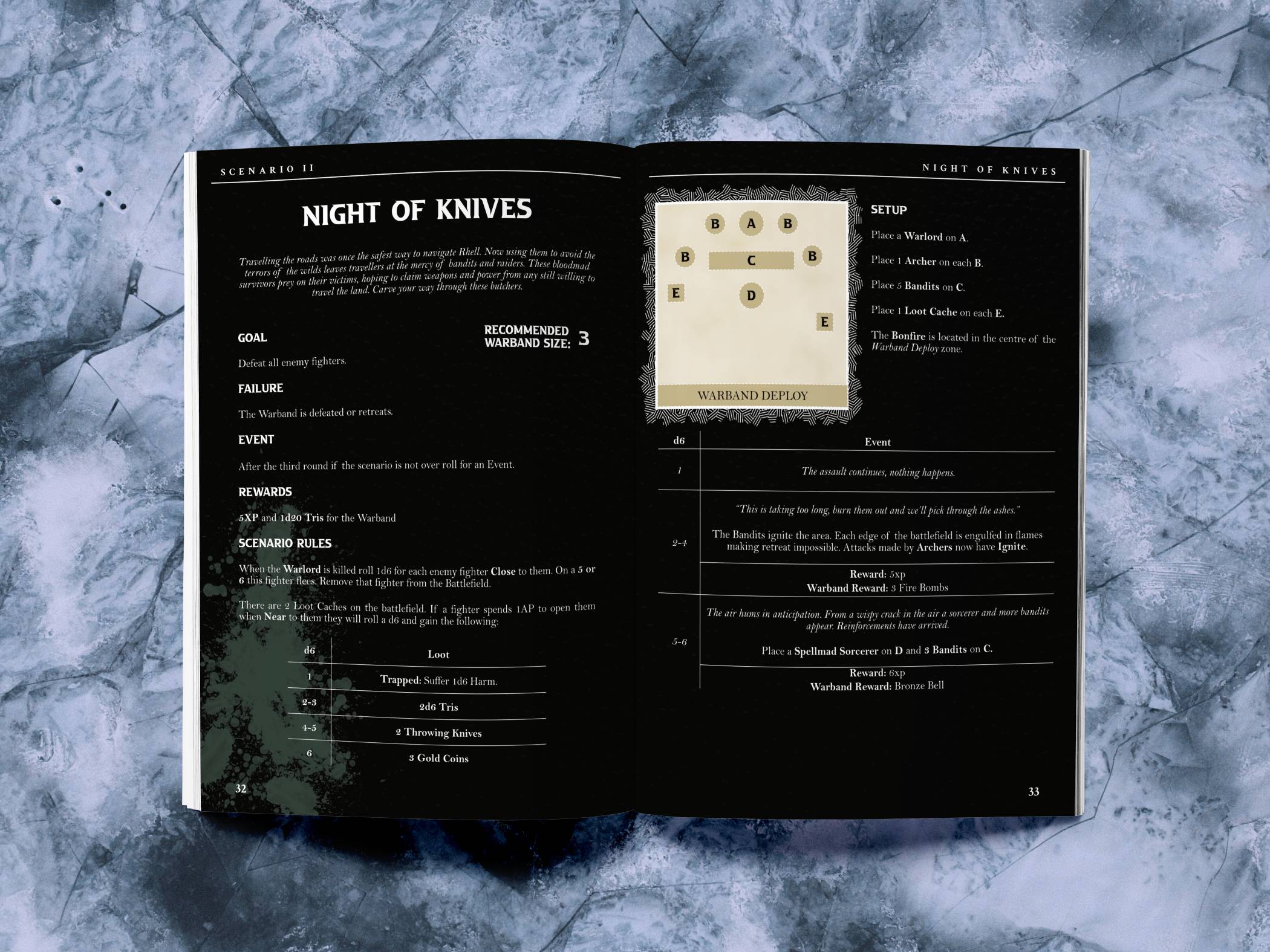Design Breakdown
As I always do after a gamejam I write a post about the project for my blog as a little reflection/summary of what I did. This time I thought I would share it here too. Original text can be found Here.
I was originally introduced to Gila RPGs games through LIGHT and its simple, expandable, and clean ruleset. When the LUMEN SRD was released I knew I had to do something with it. In April the LUMEN Jam started. I didn't discover it until May but immediately began mind mapping ideas for what I could do with the tools. I settled on 2 ideas to pursue, RAIN which was a rogue-like RPG for repeatable short 15-20 minute sessions and Fade Beyond the Veil, an RPG and miniature skirmish game.
I chose to pursue Fade Beyond the Veil as I really wanted to bend and break the LUMEN SRD without removing the core features that I love about the system. Also being a miniature game instead of a traditional RPG would help me stand out among the fantastic submissions (see them all here).

The premise of Fade Beyond the Veil was to build a miniatures game that would allow me to use the models I own from board games and tabletop and play narrative focused skirmish battles. Fade Beyond the Veil is set within the Kingdom of Rhell, a dark fantasy world where a thick fog has poured through the Veil, covering the land. Warbands of fighters head out into the fog covered land and
LUMEN as a system is based on the power fantasy found in video games, with the games made with it drawing heavy inspiration from games (eg. LIGHT drawing on Destiny). I love dark fantasy and knew I wanted to theme the game around that so I looked to the games I love for inspiration. The main source of inspiration I used for this was Dark Souls. Not the difficult and unrelenting Dark Souls as it is often boiled down to but rather the sombre and melancholy of the story and the destroyed beauty of the world.
I also looked at the Fighting Fantasy books for inspiration, mainly for ideas with the Scenarios and the way events can happen (more on this later).
The inspiration I took into the game was a sombre world which is well past its prime. A cataclysm has befallen the Kingdom of Rhell where the game takes place, reducing a once beautiful land to a fog covered haven for demons and monsters. Also inspired by the Souls Series is the Fading mechanic. Each fighter can recover after death but will mark a point of Fade. The more they fade, the more skills or spells they lose, becoming less of themselves until they are no longer the fighters you made in the beginning.
When playing the game I wanted the core loop to work just as it does in LUMEN, players take turns to perform actions or use skills by describing them, then checking for success or failure. In the event of failure or success with consequences the GM (or players as I wanted Fade to work as a solo or GM-less game) will describe the failure, most often this will be by performing actions for the enemy fighters. After each player has taken their turn and any enemy reactions have happened the players will roll die to recoup their AP and then generate drops for each fallen enemy to recover HP, AP or Tris (the game's currency). Then the rounds begin again, repeating until the players have fallen or the objective is complete.
Combat is fast and decisive, the players need to assess risks but each round takes only a few actions and rolls of the dice. The Players must decide the best time to use their abilities, if engaging a foe is worth risking the potential death of a character while trying to fulfil their objective.
Success in the scenario will reward the player with XP, Items, Tries and Bound Artefacts. Failure sees them leave with only the XP or Tries gained from defeating enemies.
One of my favourite parts of RPGs and miniature gaming is the customisation of your characters, building unique personalities for each fighter which is shown via skills. Expanding from my OPR Jam entry Favour of the Crowd, the character customisation for Fade was designed to give you a number of Skills or Spells to diversify and enhance combat while making creating a new warband quick and painless.
There are 5 Classes in the core game which match traditional RPG/gaming archetypes. Goliath is the Tank, a brawler who can take additional punishment and deal heavy damage. Immolator is the pyromancer, getting in close and casting fire spells to burn through the enemies. Shade is the assassin, fast movement and a high AP pool allows them to get behind foes for deadly backstabs. Weaver is the spellcaster, able to suffer numerous deaths and devastate foes with easier success when casting spells. Artificer is the paladin archetype, able to soak up damage from allies and buff their weapons.
After selecting a class you place your starting points in the stats (Hammer, Scythe, Weave) which are used to perform actions. Then you use Trait Points (TP) to further customise your fighters with any of the 38 Traits or 15 Spells. These Traits give benefits or sometimes hindrances to the fighter, meaning you can have 2 fighters of the same class that behave completely differently, while Spells allow fighters new abilities not exclusive to the classes.
The next part of customising characters is the creation of Weapons. Each fighter has a standard weapon based on their class and may take an additional weapon into battle. These weapons are rewarded through battle as Bound Artefacts, blank slates which can be uncovered in town. I wanted the process of defining a weapon to be fun and rewarding while also a little bit tense. Rolling the dice to find what tags your weapon has should have you crossing your fingers and hoping for a cool and unique weapon.
First you define the type of weapon from 11 possible types, this gives it the initial tags, damage and range. Then you find the Quality of the weapon, giving you 1, 2 or 3 possible tag rolls. Then you get to find what makes the weapon unique from a pool of 40 possible Tags.
I also provided printable Weapon card templates as I see these weapons as a kind of collectable. Uncovering a Grand Weapon with 3 additional tags and getting cool abilities should get your mind firing with ideas of what the weapon could be called, what does it look like, where did it come from? And by having a printed card to draw on you make it into a tangible thing to show off when playing with friends, or risk losing by taking it into battle.
One of the hardest parts for me to design was the actual missions for the players to embark on. I wanted these scenarios to each be interesting and unique with the ability to replay in different ways. To give each mission replayability I wanted an Events table with up to 5 possible unique events which would alter the mission conditions and battlefield. Initially I wanted to make 10 scenarios, each with their own events. However I cut this in half for the final release as even creating those 5 with events was tough.
Events can range from adding new enemies to the battlefield, igniting the warzone aflame or changing how enemies behave. This is where the inspiration from Fighting Fantasy books came in. I used to love finding the differences that would happen in a single scenario depending on the choices you made. I wanted each of these events to be different outcomes within the same scenario, and have them unique enough you could go back and replay the mission afterwards with a different event and think ‘oh this is completely different!’
Developing the core story and base rules for each scenario was not a problem, each mission has a small introduction, vague enough that it can be altered by the GM with no issues, a failure/win condition, event conditions, rewards and any unique rules.
As I cut down the scenario count in half I replaced them with a quick and simple skirmish mode. This is a freeform way to come up with your own scenarios using simple rules, battlefield layouts and a few tables for possible rewards.
Overall I’m happy with the game, I really enjoy making new characters with different combinations of Traits I haven't tried before and taking them into battle. And rolling new weapons is something I find extremely fun to do. I also enjoyed the layout and design of the book, and sitting at 42 pages it's definitely the largest and most ambitious project I've done so far. I would love to get a few printed up but would need to make sure I had some interest first.
In the next post I will go into the expanded content I have created and possible future releases.
Get Fade Beyond the Veil
Fade Beyond the Veil
RPG Miniature gaming in a world of Accursed knights and monsters. Illuminated by Lumen
| Status | Released |
| Category | Physical game |
| Author | Marc Cook |
| Tags | Board Game, Fantasy, Tabletop role-playing game, wargame, zine |
| Languages | English |
More posts
- Winter add-on Winter's SpiteJan 05, 2022
- Expansion Design BreakdownNov 11, 2021
- Halloween add-on Unhallowed EveOct 28, 2021
- Version 1.1 and RevenantOct 21, 2021
- Add-on launchOct 07, 2021
- Fade Beyond the Veil v1 ReleaseSep 30, 2021
- Update on ScenariosSep 02, 2021
- Creator Day UpdateJul 23, 2021
- Update on Progress & CustomisationJul 03, 2021



Leave a comment
Log in with itch.io to leave a comment.